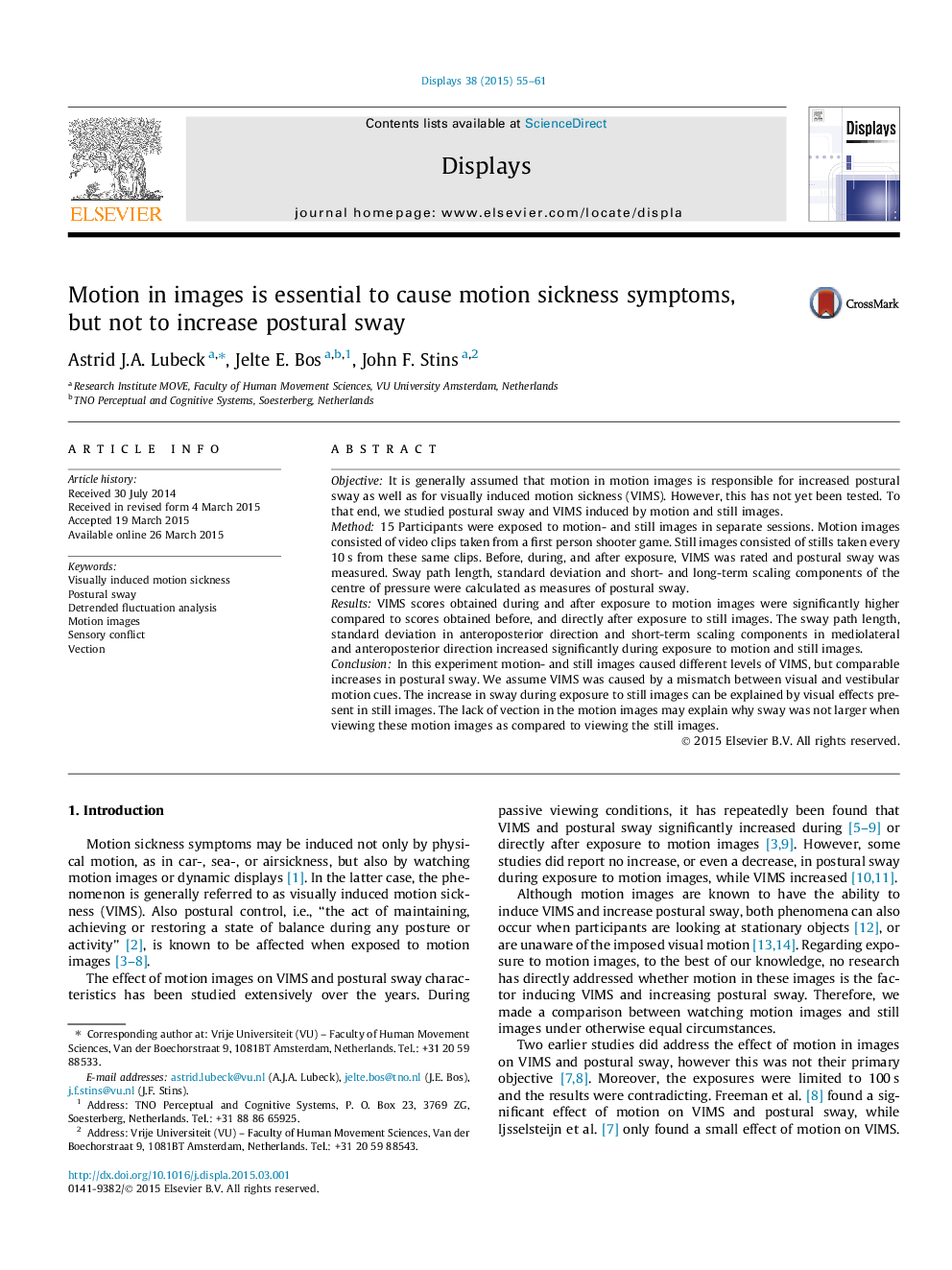| Article ID | Journal | Published Year | Pages | File Type |
|---|---|---|---|---|
| 540548 | Displays | 2015 | 7 Pages |
•The effect of visual motion on visually induced motion sickness (VIMS) and postural control was studied.•Postural sway is not necessarily increased by visual motion.•Visually induced motion sickness (VIMS) seems to be caused by visual motion.•Different from sickness, motion in images does not seem to be the necessary condition to increase postural sway.
ObjectiveIt is generally assumed that motion in motion images is responsible for increased postural sway as well as for visually induced motion sickness (VIMS). However, this has not yet been tested. To that end, we studied postural sway and VIMS induced by motion and still images.Method15 Participants were exposed to motion- and still images in separate sessions. Motion images consisted of video clips taken from a first person shooter game. Still images consisted of stills taken every 10 s from these same clips. Before, during, and after exposure, VIMS was rated and postural sway was measured. Sway path length, standard deviation and short- and long-term scaling components of the centre of pressure were calculated as measures of postural sway.ResultsVIMS scores obtained during and after exposure to motion images were significantly higher compared to scores obtained before, and directly after exposure to still images. The sway path length, standard deviation in anteroposterior direction and short-term scaling components in mediolateral and anteroposterior direction increased significantly during exposure to motion and still images.ConclusionIn this experiment motion- and still images caused different levels of VIMS, but comparable increases in postural sway. We assume VIMS was caused by a mismatch between visual and vestibular motion cues. The increase in sway during exposure to still images can be explained by visual effects present in still images. The lack of vection in the motion images may explain why sway was not larger when viewing these motion images as compared to viewing the still images.
